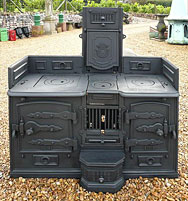Rolling Pin
No example of this needle case has been found to date and it is unknown whether it was actually produced. If you have this needle
case in your possession or know of someone who has it, please contact us so that photographs of it can be
obtained and added to this website.
Two photographs are shown below of a similar needle case in nickle-silver, although there is no evidence to indicate this style rolling pin needle case was produced by W. Avery & Son
or another English company during the time period in which Avery needle cases were manufactured.
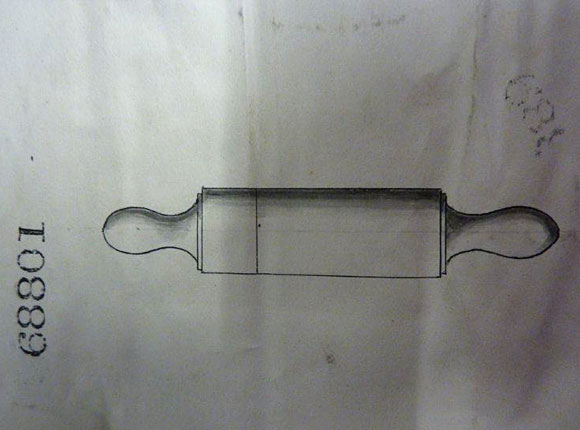
Design Representation
Design Details
Needle Case Type: |
Figural |
Patent/Registered to: |
W. Avery & Son – Redditch |
Patent/Design Representation #: |
Rd68801 |
Patent/Design Registration Date: |
February 28, 1887 |
Location of Patent/Design Registration: |
The National Archives (TNA) - Kew, UK |
Reference #:
|
TNA Representation - BT 50/83/68801
TNA Register - BT 51/35/68801/ |
Dimensions: |
Unknown |
Material: |
Unknown |
Name Variations: |
Unknown |
Other Variations: |
Unknown |
Photographs of a similar rolling pin style needle case
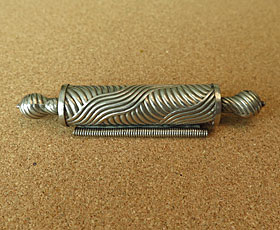
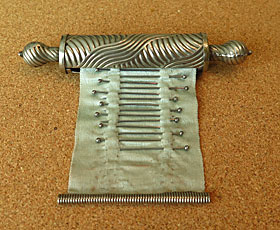
Facts
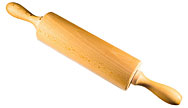
A rolling pin is a heavy cylindrical piece of wood, glass or other material, used to flatten and shape dough or pastry. They come in many
different sizes and varieties depending upon the food product to be made. Most have handles on both ends to assist the person using it,
however, many French pastry chefs prefer the handless variety as they believe it gives them a better feel for the dough. Springerle molds,
with patterns carved into wooden rolling pins, originated in Switzerland and allow bakers to impress designs of fruit, animals and flowers onto
dough to created elaborate flat cookies. Click on the photo below to see a larger version of it.

History
Although rolling pins of various materials have probably been around for centuries, the earliest documented use of one wasn’t found until the
17th century in an illustration of a baker. In the early 18th century hallow glass rolling pins were manufactured at glassworks in port cities
like Bristol in England for the sailors to give to their loved ones. These were often painted with images of sailors and ships and some even
contained phrases such as “Love and Truth” or “Be True to Me”. During the Victorian period porcelain and ceramic rolling pins became popular
especially once society began to understand how easily germs could be transferred to wooden ones. However due to the cost, wooden rolling pins
were less expensive to mass produce. Because of improvements in sanitary conditions throughout the late 19th and 20th centuries, all types of
rolling pins are available today. Click on the photo below to see a detailed view of it.
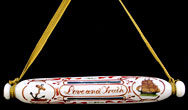
Miscellaneous
Cooking during the Victorian Era was much more difficult than it is today with our fancy stoves and microwave ovens. There was no
electricity, no refrigerator, no frozen food and canned goods were not available until the end of the 19th century.The black cast iron range were
introduced in the 1780s and improvements were made so that by the 1840’s they were commonplace in most middle class homes. The closed range
model consisted of a central firebox fueled by either wood or coal with two ovens, one on each side. Metal hot-plates were located on the top
where pots could be placed and food simmered or water boiled. Flues and dampers were used to control the temperature. Many middle class
families employed one servant to assist with the cooking. Click on the photo below to see a larger version of it.
